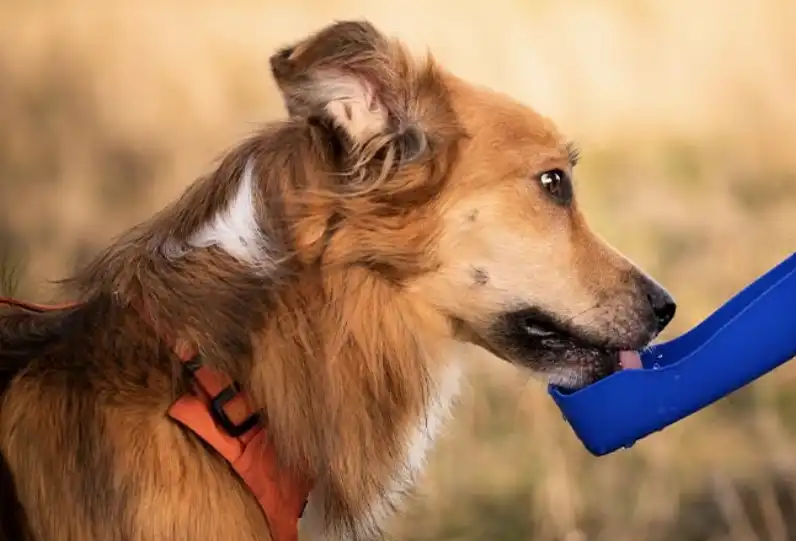Know and avoid the risks of dehydration in dogs
Dehydration in dogs can be a concern for some owners, especially during warmer weather. Prevent its effects with our tips.
Dehydration in dogs can occur at any time and in any place . This condition is a result of various factors, but what remains constant is that, if left untreated, it can be fatal, depending on the individual .
Learn everything you need to know about dehydration in dogs. Gain some basic information on how to identify it so you can prevent its onset or detect its clinical signs , promoting maximum well-being for your pet.
What is dehydration in dogs?
Dehydration in dogs is a disorder in which our pet loses fluids at a faster rate than it gains them. As a result, the animal suffers from a water deficiency, but also from a deficiency of electrolytes, nutrients vital to multiple bodily functions .
This condition can vary depending on environmental conditions, the dog’s general condition, and other factors. Therefore, your pet may experience a different type of dehydration each time.
With this in mind, it’s key to monitor not only the amount of water we provide to our dogs, but also aspects such as their lifestyle, any special health conditions, and more. Continue reading to learn more about canine dehydration here.
Types of dehydration in dogs
Our pets are unique, so the dehydration they may experience will vary. Therefore, it’s key to understand the different types of this condition so you can respond appropriately to each case.
Isotonic dehydration
This type of dehydration occurs in many situations. It consists of a reduction in both water and electrolyte levels , and is most common in cases of digestive problems in dogs.
It can be considered that, in certain scenarios, isotonic dehydration is the first to appear , although there is the possibility of evolving into another type, which we will explain below.
Hypotonic dehydration
This type of dehydration in dogs consists of an uneven reduction of water and minerals, where the nutrient imbalance reflects a low amount of electrolytes in a higher volume of liquid .
Even though the body has a higher level of “water,” it’s still dehydration. In these scenarios, it’s easier to understand the idea that simply giving a dog water isn’t enough if he’s dehydrated .
That’s why it’s best to consult with your veterinarian before making any decisions. Acting without knowledge could cause even more harm than what you intend to avoid .
Hypertonic dehydration
This scenario, on the other hand, is due to a higher presence of electrolytes and a significant reduction in pure water in the body. Some call it “simple” or “real.”
In this case, as a result of multiple reasons (which we’ll discuss later), the body experiences a water deficiency. Consequently, the amount of electrolytes increases and fluid levels in the cells decrease .
This fluid variation is usually most noticeable in nervous tissue. However, it may also manifest itself through a decrease in the frequency of toileting (oliguria), evident thirst, and even an increase in temperature or fever .
Since there are small and large breeds of dogs, each case of dehydration is different, however, they all have one thing in common: it is best to consult a veterinarian for proper treatment.
Symptoms of dehydration in dogs
Our four-legged friends can’t tell us when they’re feeling unwell, but as their owners, we can identify when something isn’t right . Learn the signs their bodies show in cases of canine dehydration with PURINA®.
Dry mouth
If you notice that your dog’s gums or lip mucosa are excessively dry or sticky, it may be an early sign of dehydration.
Lack of skin elasticity
A simple test to detect dehydration in dogs is to gently pinch the skin on their neck or back . If it doesn’t spring back quickly, it’s a warning sign.
In this particular case, the longer it takes for the skin to recover is directly proportional to your dog’s level of dehydration . Occasionally, use this test on puppies as well, as it is safe and effective .




